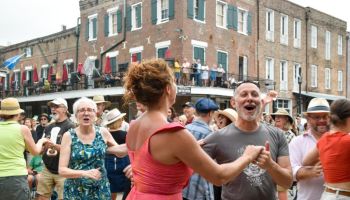PORT-AU-PRINCE, Haiti – Dr. Alix Lassegue, the physician who runs this city’s largest hospital, including its morgue, has been trying to figure out how many people died after the earth buckled so violently last week.
Unlike most of the rough figures bandied about, Dr. Lassegue’s are based on actual calculations. Standing amid the frenzy of patients being treated in every direction, he jotted down a few numbers with a pen.
The asphalt grounds in front of the morgue are roughly 1,000 square yards, with each body occupying about one square meter. Trucks have carted away the dead 10 times, which means about 10,000 bodies removed for burial.
“This, too, is not a perfect count,” Dr. Lassegue said. “But it is the best that I can arrive at given our current limitations. We must not attach ourselves to wild estimates, but try to get at the best figures possible.”
Wild estimates are not hard to find. Steps away, where morgue employees were cleaning the asphalt with hoses and brooms, one employee said 75,000 bodies had passed through; a second said 50,000; a third, 25,000.
The simple truth is that no accurate figure exists. In disasters like Hurricane Katrina, the 2004 Asian tsunami and the 2003 earthquake in Bam, Iran, the toll habitually swings way up at first, taking a couple of weeks to settle at a final, accepted number.
In countries like the United States or China, with vast resources to handle and count the dead, the numbers are likely to be more accurate than in a poor nation like Haiti, experts said.
The fact that the earthquake, with a magnitude of 7, devastated Port-au-Prince, Haiti’s capital, virtually paralyzing a government that was hard-pressed to count the living in normal times, only compounded the problem.
“There are a lot of similarities with war here,” said Dr. Frederick M. Burkle, an expert on disaster response. “When you have poor countries, poor governance and poor baseline demographics, things can vary quite a bit.”
It is also virtually impossible to extrapolate the toll from an earthquake in one country to another. Factors like building materials and population density vary too much to make any such comparison scientific.
The adobe material in Bam, for example, was much more likely to suffocate people than the concrete in Haiti. The earthquake that virtually leveled Bam was a magnitude 6.3. The first government estimates pointed to more than 41,000 dead among an area population of 142,000. Eventually, the number settled at 26,271.
Round numbers are a sure sign that nobody knows, said Dr. Claude de Ville de Goyet, a Belgian expert on disaster emergency medicine. It takes a real count to establish a better figure. But in Haiti, where estimates of the dead now run from 50,000 to 200,000 or more, no one is sure that will ever happen.
“I don’t think we will ever know what the death toll is from this earthquake,” said Edmond Mulet, the newly appointed head of United Nations operations in Haiti. People are burying bodies by themselves, many have been thrown into dumps outside the city and an untold number still lie under the rubble, he said.
On Wednesday, United Nations officials began quoting an estimated number of bodies buried at 75,000, which they called the Haitian government figure. But the most common reaction among both United Nations and Haitian officials is that there are too many problems coping with the dire needs of the living to worry about the dead.
“We pass through the bodies, we saw the bodies, we don’t have time to count them right now,” said Guiteau Jean-Pierre, the director of the Haitian Red Cross.
Usually the death toll in earthquakes emerges as a subset of the number of missing persons reported, with some of them turning up later alive and some buried in the rubble. Haitians are being encouraged to report all the missing to the mayor’s office or branches of the Department of Civil Protection, but again it is not clear how representative their lists may be at this point, Mr. Jean-Pierre said, with so many focused on survival or escaping Port-au-Prince.
Experts in disaster management say that if they know the population density of an area as well as the number of buildings destroyed, it is sometimes possible to produce an estimate.
In Haitian neighborhoods hit by the quake, the number of buildings knocked over varies from about 50 percent to less than 10 percent. The fact that some areas escaped relatively unscathed suggests a less-than-catastrophic toll as a percentage of the overall population of Port-au-Prince, which is estimated at about four million when temporary residents are included.
Satellite images
In Geneva, experts at the United Nations Operational Satellite Applications Program first calculated the level of destruction by looking at satellite images. They just received clearer aerial photos that will allow them to catalog the damage house by house.
But those experts have not yet correlated damage estimates from satellite photos with prequake data on population density in different parts of the city, making it difficult to estimate a probable range of casualties.
In the lower-middle-class area of Edmond Paul in southern Port-au-Prince, Isaac Jean Widner, a lawyer and community leader, said about 3,000 people lived there before the quake. He and his neighbors had begun compiling a list of the dead.
“We have nothing else to do since we are living under the sun and the stars,” he said. He estimated that as many as 1,000 people had died, but between the exodus and those still trapped it was impossible to confirm.
Experts said that after the people of Port-au-Prince and the surrounding areas returned, it might be feasible to discern the toll by interviewing survivors about the number of relatives lost.
“It could be that 10 percent of our neighbors have perished, maybe more, maybe less,” said Jean-Paul Duperval, 57, a geologist who lives in Edmond Paul. “Really, no one knows.”
Via: MSNBC.com / New York Times
(CB)













